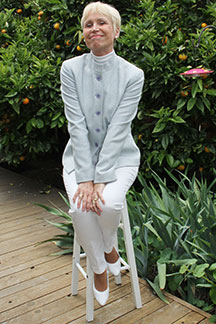Did you know that our Christmas tree tradition is German? The pagan custom dates back to the days before Christianity. As early as in the 16th century, people in Germany are said to have brought decorated trees into their homes. The Protestant reformer, Martin Luther, is credited with having added lighted candles. German immigrants eventually brought their tradition to the U.S. where the first recorded Christmas tree was displayed in Pennsylvania in the 1830s. But because of its pagan origin, most Americans did not adopt the tradition until the 20th century.
Beginning of the Tradition in Europe
Long before Christianity, plants and trees that stayed green all year had special meaning Europeans. People believed that the sun was a god and that winter came every year because the sun god had become sick. When plants greened again in spring and summer, they thought the sun god had recovered. To keep him healthy though out the year, people hung evergreen boughs over their doors and windows. Others built pyramids of wood and decorated them with evergreens.
Puritans rally against the Christmas tree
New England’s Puritans tried hard to eradicate the old pagan tradition of decorating trees. Throughout the 18th century, they forbade any Christmas tradition that wasn’t a church service. But by the 19th century, the influx of German and Irish immigrants had weakened their efforts.
The Christmas Tree during Queen Victoria
In 1846, Queen Victoria of England, her German Prince, Albert, and their family were sketched in a London journal standing around a Christmas tree. Since the queen was immensely popular, Britain’s subjects as well as America’s East Coast Society imitated the custom.
The American Christmas Tree Tradition
In the early 20th century, German-Americans continued to use apples, nuts, and marzipan cookies to decorate their trees. Americans used homemade ornaments. Soon popcorn, interlaced with berries and nuts, became fashionable. And after then arrival of electricity, lit Christmas trees appeared in town squares across the country. Today, the German Christmas Tree tradition has become an American tradition as well.
For a sneak peek at the first 20+ pages of my memoir, Walled-In: A West Berlin Girl’s Journey to Freedom, click “Download a free excerpt” on my home page and feel free to follow my blog about anything German: historic or current events, people, places or food.
Walled-In is my story of growing up in Berlin during the Cold War. Juxtaposing the events that engulfed Berlin during the Berlin Blockade, the Berlin Airlift, the Berlin Wall and Kennedy’s Berlin visit with the struggle against my equally insurmountable parental walls, Walled-In is about freedom vs. conformity, conflict vs. harmony, domination vs. submission, loyalty vs. betrayal.


















